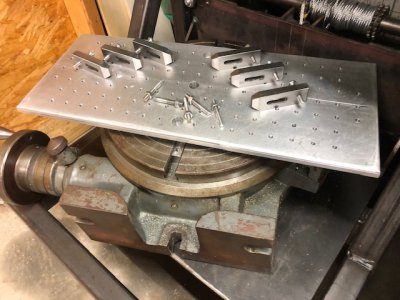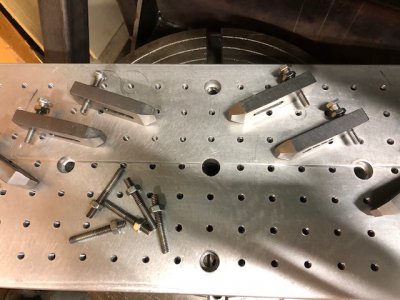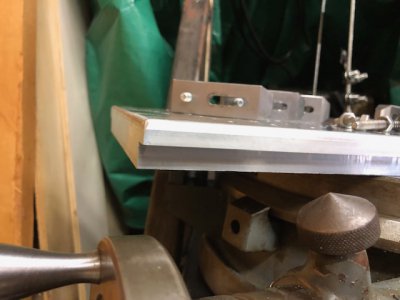- Joined
- Jul 17, 2019
- Messages
- 13
Big Block,
One of my, to do, projects is adding a plate to the rotary table to be a clamping, sacrificial plate.
I would like to add a fence that is parallel to the milling machine table X feed when the rotary table is set to zero.
In order to accurately accomplish this the plate needs to be installed to the RT quickly and easily.
A smart fellow in our local group has his plate set up with close tolerance pins that slip into the RT's t slots.
Just throwing ideas around.
I like that idea and will incorporate it into my plans. thanks
I would also not make the plate round if it is currently square. The idea being that we do not know what our next project might be, so why cut anything off or drill anything until it needs to be for the current job.
The plate I have is 1/2" thick and it is already 8" round, that can't be changed.
On a fixture plate for a 4" RT, I would not make the threaded holes larger than 1/4"
I settled on 3/8 threaded holes because most of my clamping fixtures use 3/8's hardware and all of my T-nuts use 3/8 as well. Changing the hole size necessitated all new clamping hardware




